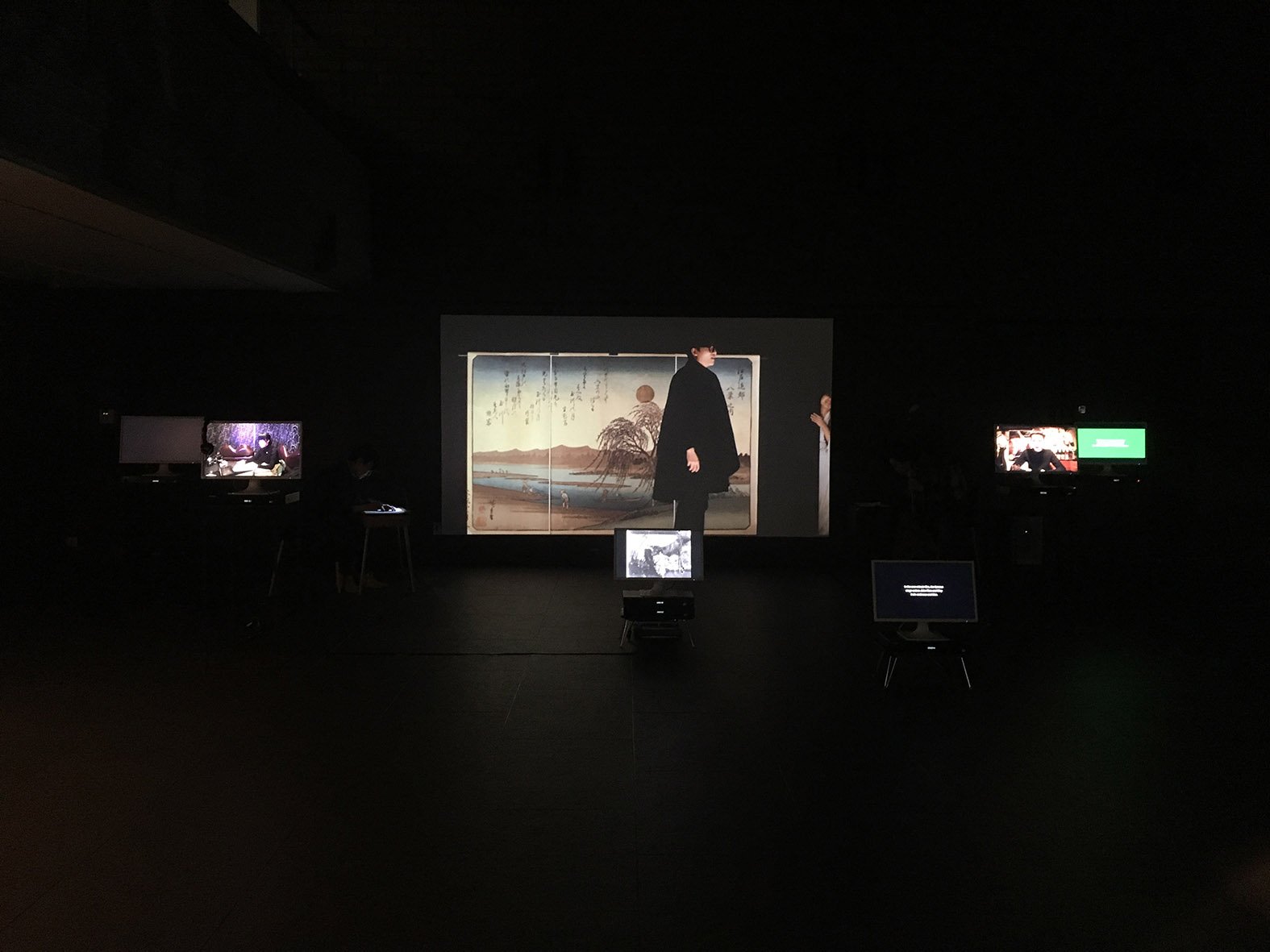7-channel video installation. Duo-exhibition Ties. Goethe Institut Tokyo, 2018.
resurrection of the corpses
Seven studies on absence
Benshi (弁士) or Katsuben (活弁) were narrators whose lengthy explanations, interpretations and dramatic inflections accompanied most silent film screenings in Japan from their early days. The work of the Benshis reflected the Japanese passion for understanding things in detail and one of their roles in the early days was to explain the mechanisms of film projection. Benshis would frequently embroider the plot with fancies and inventions of their own. In a way, they were co-directors, having absolute freedom to re-write the original scripts based purely on their interpretation of the images. Departing from their role as movie-tellers, the project stages a live performance with one of the last remaining Benshis to investigate the intersections between film, storytelling and phantoms in its multiple facets: the ghost as media and as a recurrent element in Japanese imaginary and cinematographic production; film itself as a spectral media, which died but acquired an afterlife through digital transfers and continues to haunt the present; and the Benshi as a medium to link the films of the past with the present moment of the performance.
RESURRECTION OF THE CORPSES
HD video, 10’
2017
Reenactment of the film set of ‘Resurrection of the corpses’, the first ghost movie ever made in Japan (1896), which is presumably lost. For the exhibition, the Benshi Nanako Yamaguchi wrote a script for the video and performed live on the opening night accompanied by a shamisen (japanese guitar) player that traditionally accompanied silent films screenings.
AT LA JETÈE
La jetée is not only a film by Chris Marker but also a famous bar in the Red District of Tokyo, where movie lovers meet. Koske Tsuda will tell his favourite Japanese ghost stories.
KARAOKE-KAN
The benshi Nanako Yamaguchi rehearses her script for the silent film ‘The Sheik’, with Rudolph Valentino, that she will perform a few days later. She brings her own dvd player to the a karaoke cabin in central Tokyo.
THE KISS
The benshi Ueda Hoteiken spoke as if there was nothing he did not know, and was nicknamed “Mr. Know-It-All”. Ueda was in charge of the film The Kiss, which arrived in Japan in 1897. In the one-minute film, which was looped, John Rice and May Irwin embrace and kiss continually. Ueda was nervous about how the police, who had the authority to stop any form of entertainment containing “obscene articles, arts, and other such things that are harmful to public morals,” would react to the film. Ueda resolved the problem by explaining in his opening remarks that Westerners traditionally greeted each other by kissing, similar to the Japanese custom of slapping a friend on the shoulder. Satisfied by Ueda’s setsumei, the police allowed the show to continue, and it quickly became Japan’s first hit motion picture.
MOMIJIGARI
Momijigari (紅葉狩) is a record of the Kabuki actors Onoe Kikugoro and Ichikawa Danjūrō performing a scene.
It was filmed in November 1899 in an open space behind the Kabuki-za in Tokyo.
There was an agreement that it would not be screened for the public until after Danjūrō’s death, but when he fell ill and could not appear at a performance at the Naka-za in Osaka, it was screened in his place.
It was the first time a moving image replaced a live man.
LE PRINCE
Louis Le Prince, who had with him a curious mahogany box, asks his son, parents-in-law and a friend to stand in front of the box and walk in a circle. The box was Le Prince’s camera and the film was made several years before Edison and the Lumieres came onto the scene. By the 1880s, he was one of many inventors trying to master the technology for what would become film. He experimented with projection techniques and was due to hold his first public screening in New York in 1890. But he never got there. While visiting his brother Albert in France with two friends, Le Prince was said to have boarded a train from Dijon to Paris in September 1890. He was never seen again.
THE PHANTOM MENACE
The first digital projector was publicly demonstrated on June 18, 1999 for the release of Lucasfilm’s Star Wars Episode I: The Phantom Menace.
This history-making event introducing digital projection to movies has been compared to the showing of “The Jazz Singer” which introduced “talkies” to movies in 1927.
‘’Film is wonderful. It’s done tremendous things for us over the last 75 to 100 years. But another way is here. You’re watching history’’ said Mr. Romano, a Cinecomm executive.
